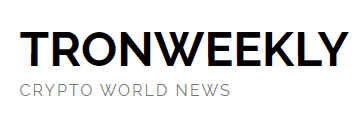You are here: Home / News / Spanish Law Enforcement Seizes $26.4 Million in Illicit Crypto Funds

January 28, 2025 by Sheila
- Spanish authorities freeze $26.4M in crypto linked to pan-European laundering using T3 Financial Crime Unit.
- TRM Labs reveals 58% of illicit crypto transactions occur on the Tron blockchain.
- Tether’s USDT remains the top-used asset for crypto crime, with $225M frozen in 2023 scams.
With the help of blockchain firms Tron, Tether, and TRM Labs, the Spanish authorities have seized $26.4m in funds associated with a pan-European money laundering operation. This is part of a larger plan to tackle financial crimes by applying cryptocurrency in the fight, the two collaborating on the T3 Financial Crime Unit.
The operation identified wallets connected with unlawful activities from surveillance and service providers’ Know Your Customer (KYC) information. The T3 Financial Crime Unit established by Tron, Tether, and TRM Labs in August 2024 helped identify and freeze the assets. As reported by the Guardia Civil, the criminal organization was transferring millions of dollars across international borders, both in cash and in cryptocurrencies.
Blockchain Firms Support Law Enforcement Against Crypto Crime
The T3 Financial Crime Unit remains important in fighting financial crime through cryptocurrency surveillance and actions. In its first year of operation, this unit seized $126m worth of cryptocurrencies associated with criminal activities. Through the analysis of Blockchain data and using special instruments, the unit assists the police in identifying the source of funds.
TRM Labs also identified that 58% of illicit activities use the Tron blockchain, while half of the Tron-based unlawful activities are related to sanctioned entities. According to the researchers, Tether’s USDT is the most commonly used digital currency in criminal activities due to its centralized structure that allows issuers to freeze unlawful transactions. Notably, Tether halted $225 million of its assets because of fraud in 2023 after the US Department of Justice launched an investigation.
Such partnerships between blockchain firms and law enforcement agencies show the industry’s willingness to improve integrity and develop viable solutions to fight the increasing financial crime cases. The authorities intend to enhance the efficacy of combating crime globally through these partnerships.
Stablecoins and Blockchain Transparency in Anti-Crime Measures
Due to their popularity and liquidity, stablecoins, such as Tether’s USDT and Circle’s USDC, are particularly vulnerable to manipulation. Nevertheless, these centralized assets contain preventive techniques to prevent transactions related to criminal activities. Tether CEO Paolo Ardoino has stressed Tether’s adherence abuse and that anyone using the platform for illicit purposes will face consequences.
Due to threat changes, some criminal organizations have adopted other measures to counter act enforcement. Stablecoins from Huione Guarantee and other platforms for money laundering were created to prevent the freezing of funds.
Nonetheless, blockchain companies continue to strive to ensure that their networks are not compromised in any way. By improving security measures and cooperating with the police, they seek to prevent the use of cryptocurrencies for criminal activities.

 9 months ago
55
9 months ago
55




 English (US) ·
English (US) ·